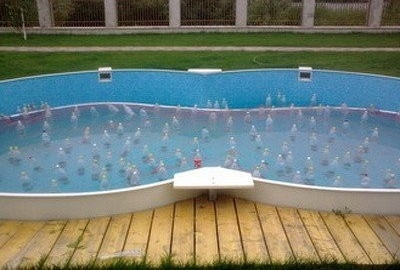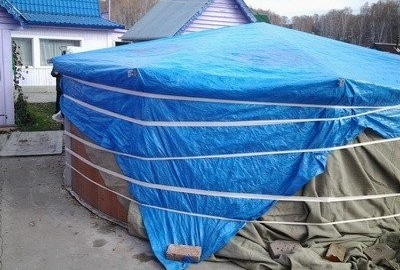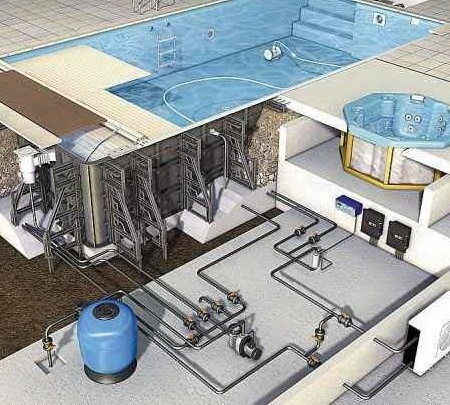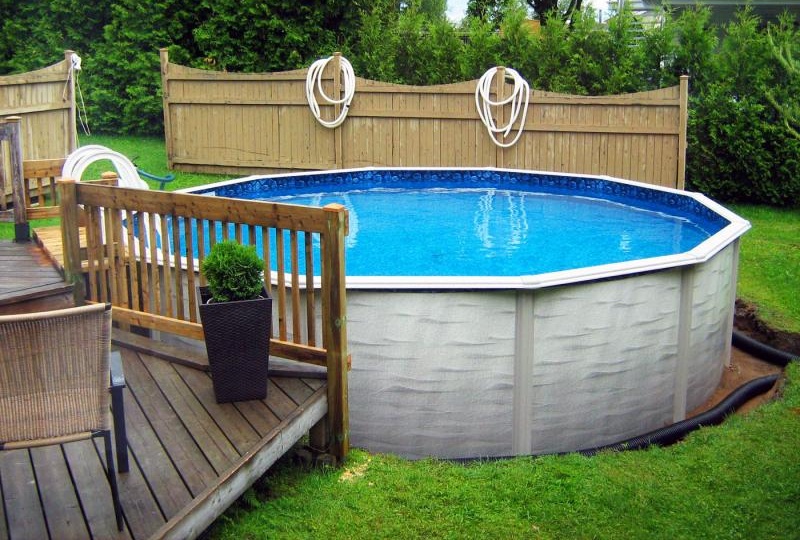How to prepare an all-season prefabricated frame pool for winter?
Good afternoon! For the first time acquired a frost-resistant prefabricated pool. I like everything very much. Just haunted by the thought of how the design wintered. Please advise how to properly prepare such a pool for winter?
Do not worry, frame pools usually tolerate the cold season. Of course, provided that they were properly prepared for him. The process of preservation of the structure should begin at a temperature not lower than + 15C. It is carried out in several stages.
Contaminant removal and pool treatment
We start by removing visible contaminants. We do not drain the water. Thoroughly clean the walls and bottom of the pool with a special vacuum cleaner. You can use a makeshift design, which is a fairly stiff brush, mounted on a long hollow handle. The opposite end of the handle is connected by a hose to a working skimmer. Filters of the device will take away contaminants from the water and send the purified water back to the tank.

To prevent destruction of the walls of the bowl by frozen water, compensator floats are placed in the tank
The next stage is a shock chemical treatment of the pool with chlorine preparations. Hydrogen peroxide can also be used for these purposes at the rate of 1200-1500 ml per each cubic meter of water. Thus, it is possible to level the pH in the tank and protect the water from acidification and insects. After adding chemicals to the water, the circulation pump should function for at least seven hours, after which we switch it to reverse and rinse the filter of the device.
Dismantling the pump and protecting it from damage
Now you can start dismantling the pump. We drain the water from the tank to a level of about 80 mm from the lower cut of the water supply nozzle. The pump hose is disconnected from the pool wall, the hole is closed with a special plug, which should be supplied with the tank. Before storing the pump for storage, we carefully inspect it, release it from water that could remain inside the structure. Then we remove the sand filter, which must be stored separately and the equipment is well dried. We close all openings in the case with a film and remove the device in a dry place.
To protect the bowl from damage that may result from the expansion of frozen water, special compensators should be prepared. It can be lightly inflated car tires, foam floats, cans or plastic bottles. They are placed over the entire surface of the pool so that the surface of the water is almost completely covered by them. On average, one compensator should be for every half cubic meter of water. Floats must be fixed to the bottom of the tank with special weights, such as sandbags.
A small nuance: metal pipes cannot be used as cargo; it is also not recommended to fix compensators to the weights with wire.This is explained by the fact that the metal in water undergoes corrosion and can leave not removable traces of rust on the walls of the tank. Fixation of floats to the bottom is required. If you simply scatter compensators, they will inevitably pile up in one place, which makes their useless. Therefore, you have to go down to the pool, lay each float in the space allotted for it, tie them with a rope and fix its ends on the sides of the tank.

To prevent precipitation from accumulating on the protective screen, a float is installed in the center of the tank to raise the film
What is the best shelter?
In conclusion, we cover the tank with a special plastic screen, which should be included in the pool kit. So that precipitation does not accumulate on its surface, you need to raise the center of the canvas. This can be done with the help of special inflatable airbags-floats or the usual inflated car tire. The structure is installed in such a way that its upper edges are located above the sides of the pool. The float set in this way will raise the center of the screen to a height sufficient so that precipitation does not linger on its surface. Now the pool is completely ready for the cold.


